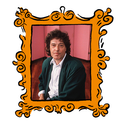There are many ways to write a philosophy of music—but two in particular stand out. One way is to approach music with the curious ear of the ethnomusicologist open to all the varieties of music around the world. This critic sees them as embedded in specific forms of life—and only really comprehensible when viewed within them—and so is careful not to treat any musical culture as a yardstick against which to measure the others.
The other way, now seriously out of fashion, is to regard western forms of music, especially the classical tradition, as central to what music is, or ought to be, or could be. The problem with this approach is that other forms of music are inevitably found wanting when compared with these majestic works. All that matters, for this kind of critic, is the inner state of the solitary listener, communing with a long-dead composer genius.
It will come as no surprise to learn that Roger Scruton’s new book Music as an Art falls into the latter category. Scruton is a doughty defender of western classical music, a stance which is of a piece with his doughty defence of conservative values in general. His rage against musical modernism is very like his rage against architectural modernism. It’s rooted in his belief that evolution is always better than revolution, and that the wisdom of ages is better than the fashion of the moment. For Scruton it is our task to conserve the culture bequeathed to us and pass it on to the next generations. We owe a debt to the dead as much as to the unborn.
Music occupies a special place in Scruton’s life. It is the art to which he feels closest, and the one to which he has a practical connection. He’s an accomplished keyboard player, who often plays the organ at his local church in Wiltshire. He is the composer of an opera as well as other pieces. And he has written more about music than any other art form. This new book comes 20 years after his vastly impressive and erudite Aesthetics of Music, and nine years after his follow-up volume Understanding Music.
This new volume of essays amplifies the themes of those two earlier books. It is divided into two parts, the first of which tackles the nature of music’s connection to morality and the transcendental, and whether cognitive science can throw any light on the art. The second part, which is much more entertaining, offers critical reflections on all kinds of music, from classical quartets to heavy metal and the avant-garde. Unlike many philosophers with strong opinions on music, Scruton actually has a musical ear, and an ability to catch the expressive kernel of a piece in a pungent or witty phrase. In his essay on Britten’s “Lyke-Wake” Dirge, Scruton points out the way the melody sung by the tenor repeats imperturbably, refusing to be unsettled by the surrounding harmonic turbulence. “The music has the quality of a mediaeval fresco, with Christ in Majesty above the writhing bodies in the pit below,” he says, a striking image which captures something essential in the music. Scruton is equally good at catching the essence of the pop songs he professes to despise, so well that one wonders whether he doesn’t get a sneaking enjoyment from them. He remarks of Mary J Blige’s “Get to Know You Better” that its limited melody is “emphasised by the yukky 13th chords and droopy vamping which open the piece, with a sound that suggests someone trying carefully to puke into a wine glass.”
*** For the first part, though, Scruton avoids sarcasm and vivid metaphor in favour of the careful, burningly lucid prose that he brings to the job of analytical philosophy. Scruton’s public persona as foxhunter-in-chief and right-wing provocateur means that some people might be unaware of his considerable powers as a philosopher. Within the world of professional philosophy, Scruton takes a definite “anti-realist” stance. While some thinkers believe that music’s qualities inhere in the notes themselves, and that “stormy” music is in some way literally stormy, Scruton inclines the other way. For him all art, and especially music, is rooted in the subjective experience of the onlooker or listener. “Music exists in the ear of the listener, not on the page of the score, nor even in the world of sound,” he says, meaning that it is our act of listening that endows mere vibrations with meaning and purpose. We hear sounds as music, just as we perceive a weeping willow as being sad when it’s just a tree, and are moved by a painting like The Scourging of Christ even though what our retina literally takes in are mere patches of colour.
It follows therefore that Scruton is suspicious of the modernist composer John Cage, who wanted sounds to “be themselves.” For Scruton, there is no “self” for sounds to possess; there is only the selfhood that we as conscious listeners give them. For the same reason, he is wary of cognitive science, which now rules the roost in thinking about how our minds approach music. It deals not with the intentional notes and harmonies that listeners hear, but with the dead vibrations that prompt them, and the grey matter within our skulls that “processes” them. He is very good at skewering the apparently neutral but actually deeply tendentious descriptions of music offered by some cognitive scientists. He quotes Aniruddh Patel’s description of a melody as a “tone sequence in which the individual tones are processed in terms of multiple structural relationships.” “But what is a tone?” asks Scruton. “Is it identical to a pitched sound, or something that is heard in a pitched sound?” He follows up by writing that “even if we came up with a theory about the processing of music, it would not in itself be an account of musical understanding.”
This essay is evidence of that fearlessness in the face of intellectual fashion which is perhaps Scruton’s most admirable quality. His essay on music and the moral life insists that to be non-judgmental is itself an act of judgment, and that listening to music is an inherently morally charged act, because it is a form of education for one’s feelings. This is why for him the essence of music’s importance lies in its expressivity. Expression in music matters “because it is a manifestation of the moral life, a way of inviting us to shape our sympathies in response to a character imagined in musical form.”
Later on, Scruton goes further, saying that listening to music has the same “element of overreach” that we have in our dealings with each other, when we intuit an “I” that lies beyond the mere appearance and utterances of the person in front of us. So is Scruton identifying our feelings of transcendence in music with the hunger for that “beyond” which we can never reach? If so, that would surely colour those feelings with pathos, even a sense of tragic insufficiency. But that is not necessarily what we feel when faced with music, so Scruton changes tack. He says that music and art “make the beautiful more beautiful, the moving more moving, and the profound more profound… They endow empirical emotions with the completeness and purity that in everyday life they could never attain.” Music, it seems, does not give us access to the transcendental, only the here and now “in its purified and completed form. And maybe that is the best that we can ask for.”
*** All this is insightful as well as moving. But Scruton’s insistence on music’s high purpose ultimately has a debilitating effect. He pursues height and depth at the expense of breadth and fine-grained texture, qualities which can only be found if one lowers one’s gaze, and deigns to look at music’s everyday reality, amid the muddle of ordinary human life—and beyond the west, to music in the wider world. That stance is more and more the stance of musicology nowadays, but Scruton wants nothing to do with it. And yet even within his chosen field of classical music, his insistence on the sovereign conscious subject can lead his critical judgments astray.
In his essay on Schubert’s tremendous unfinished quartet known as the “Quartetsatz” Scruton points out, quite rightly, that the overall key of C minor is constantly challenged by what he calls its “negation,” the tonally remote key of D flat major. What he doesn’t say is that as well as being vastly disruptive, this relationship is also perfectly conventional. The harmony of D flat major, when sounded within the key of C minor, is known as “Neapolitan” and was already common by the dawn of the classical era. The expressive effect of this harmony as deployed by Schubert is powerful precisely because it is both ordinary and startling, but Scruton doesn’t want to admit that. He wants to project our hearing of Schubert’s quartet on to a higher plane—the lone subjectivity against the uncomprehending universe—but in doing so he actually evacuates the music of its richness.
Scruton’s lofty disregard for music’s history and social circumstances leads him astray elsewhere. He castigates pop music for placing the performer at the centre of our attention. Has he not heard of Franz Liszt? It was the pianist’s magnetic presence that made the ladies in his audiences swoon, not his compositions. And for much of operatic history the composer was ranked some way below the star singers who drew the crowds. The great singer Gemma Bellincioni tells us in her memoirs that the audiences for Meyerbeer’s Les Huguenots in Madrid in the 1880s weren’t even aware of the composer’s name; for them it was “Les Huguenots by Roberto Stagno” or whoever the leading tenor happened to be that night.
Another example: Scruton blames the invention of the “lead sheet” in jazz for the recent downgrading of voice-leading in harmony. A “lead sheet” is a musical shorthand useful for pop songs and jazz standards, which gives just the melody, the lyrics, and the sequence of chord changes that underlie the melody. As such it treats harmonies as mere processions of “vertical” aggregates, whereas “voice-leading” is to do with the weave of melodies and subordinate lines which constitute music’s “horizontal” element. (The combination of horizontal elements at any moment will of course result in “vertical” chords that build upwards.)
Scruton is convinced that harmony works more effectively the more securely it is rooted in ancient rules that govern voice-leading, but it is a fact that purely vertical considerations have played a greater role in harmonic movement over the centuries. We see this already in the Baroque era, when musicians playing the accompanying “continuo” part made use of a harmonic shorthand called figured bass, which shows exactly the same disregard for voice leading as a jazz lead-sheet—though a good player would be expected to keep voice-leading rules in mind. Voice-leading survived, for another three centuries at least, but its grip loosened as the dominance of sacred vocal music—from which the rules of voice-leading were derived—faded into the past.
Scruton’s fixation on the norms of classical music means that when he stumbles across a door into a new way of thinking about music, he prefers to slam it shut rather than investigate. He says of Nirvana’s “In Bloom” that “the chords succeed each other in exactly the arrangement that is implied by the shift of the hand along the frets of the guitar, and in which the illogical sequence is led by none of the voices.” Scruton’s response to a potentially fruitful observation is to kill it stone dead, by bringing the song before the bar of traditional voice-leading, where of course it is found wanting. In fact, the song is a telling example of a phenomenon of colossal significance in world music, and of no small importance in classical music as well. This is the relationship between the body and the instrument, as mediated by techniques of playing, a relationship revealed by the shapes that a performer’s hand at the piano or West African kora naturally “falls into” when performing.
This complex relationship between action, instrument and perceived result has had a massive influence on the language of music; but in classical music the influence is subterranean, not acknowledged in textbooks, precisely because it contradicts the rules. There is a clue here that points us towards an entirely different conception of music—more communal, where the sovereign isolated subjectivity of the listener is no longer the focus of attention. That ought to make it of burning interest to a philosopher of music, but Scruton prefers to look the other way. And this is why his book in the end, for all its passion, feels curiously thin. Scruton is a vastly gifted philosopher and writer, admirably committed to the form of music that he loves. But there are so many more things in music than are dreamt of in his philosophy.












